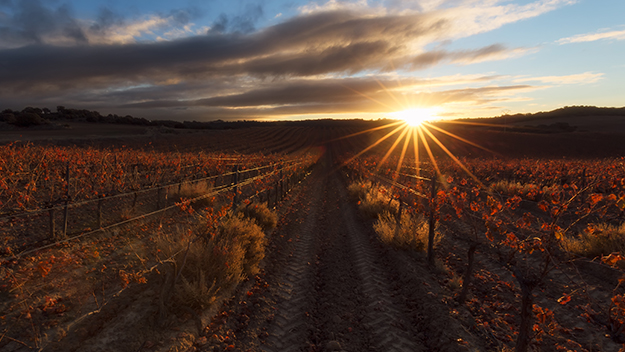Find your winery or vineyard
2 Wineries and Vineyards for sale in DO Ribeiro

Medium-sized winery with its own vineyard and grape purchase contracts.
DO Ribeiro

Manor house with artisanal winery in Ribeiro for sale.
19th-century restored manor house with winery located in Ribeiro.
Infographic of the Denomination of Origin

Change to imperial units (ft2, ac, °F)Change to international units (m2, h, °C)
D.O. year of foundation:
1932
Number of wineries (2017):
110
Total surface area:
2.646 ha6.538 ac
Maximum production allowed:
13.000 kg/ha11.598 lb/ac
Altitude of the vineyards:
Min: 75m
Max: 350m
Min: 246ft
Max: 1.148ft
Temperature:
Min: -3º
Max: 40º
Min: 27°F
Max: 104°F
Yearly hours of sun:
2.250
Yearly rainfall:
900 l/m284 l/ft2
DO Ribeiro
Location and history
The vineyards that follow the course of the Miño River, towards the south, make up the Ribeiro Designation of Origin. The denomination is made up of the town councils of Ribadavia, Arnoya, Beade, Carballeda de Avia, Castrelo de Miño, Cenlle Cortegada, Leiro and Pugín.
The history of Ribeiro wine goes back to the implementation of the intensive cultivation of wine in the first siglos of the Roman imperial period, siglo i d. W.
Subsequently, the German invasions were a strong regression, although the cultivation of life did not disappear. After this stage, in the High Age Media the cultivation of life in El Ribeiro began to resurge with strength, constituting one of the main cultivations at the doors of a thousand years. During this stage, the most important Gallegian ecclesiastical centers settled in El Ribeiro, farms and priorates to provide Ribeiro wine to the wineries of their main headquarters. The monasteries were the great impellers of the vineyard.
The flourishing trade and appreciation for the wines of El Ribeiro were reflected in the decree with the prices of the food that was sold in Santiago de Compostela in 1133. Among them, the Ribeiro wine is detailed as the most expensive of how many were sold there population. A few words later, the English became the main customers for the product outside the peninsula. But the Ribeiro was even longer. The region's wines also sailed on boats that took the first settlers to America, one of the first being tasted in the New World.
Throughout the 16th century and the first half of the 17th century, El Ribeiro enjoyed a flourishing trade, and was one of the greatest riches of Galicia, until places of American origin devastated the region during the 19th century. In 1853 I discovered powdery mildew; the second plague, in 1886, was the milium; y third time, since 1890, I was the phylloxera.
In 1932 the Denominación de Origen Ribeiro fell under protection with the publication of the Wine Statute.
Soils
Sandy granitic 70%
Franc schist 20%
Sedimentary 10%
The vineyards are planted from 75 to 400 metres above sea level in valleys and sometimes on steep slopes in terraces known as 'socalcos' or 'bocaribeiras' that follow the curve of the hills. The soil has an average depth of between 70 and 100 cm and is essentially granite in origin, with large amounts of rocks and gravel that enhance its macrostructure and the effect of the sunlight on the grape bunches. The texture is predominantly loamy to sandy, and to a lesser degree sandy-loam, although loams are generally found in areas of alluvial sedimentation, and the finer textures on metamorphic rock. Organic matter content ranges from 2 to 4% in the topsoil, and tends to be lower than 3% in the sub-soils.
From a physical-chemical standpoint, the soil has a tendency to be acid, a factor usually corrected by the growers.
The red grape varieties in the DO Ribeiro that are native are caiño longo, caiño tinto, caiño bravo, ferrón, fousón, brancellao, mencía, with garnacha and tempranillo also permitted. The white varieties are Treixadura, Albariño, Godello, Torrontés, Loureira, while Palomino, Macabeo and Albillo are also permitted.
Climate
The area's very particular climate is favoured by the natural geographical barriers of the area and its location in southern Galicia. Mountain barriers protect the region from sub-Atlantic storms and provide a microclimate somewhere between Oceanic and Mediterranean types. Thus, it is wet, with an average temperature of 14.5ºC. The characteristics of the two climates, mixed here, allow the fruit to ripen on the vines, preserving all its aroma and acidity.
Discover more wineries and vineyards for sale in these wine regions in Spain
Subscribe to our mailing list to receive news about wineries and vineyards.







